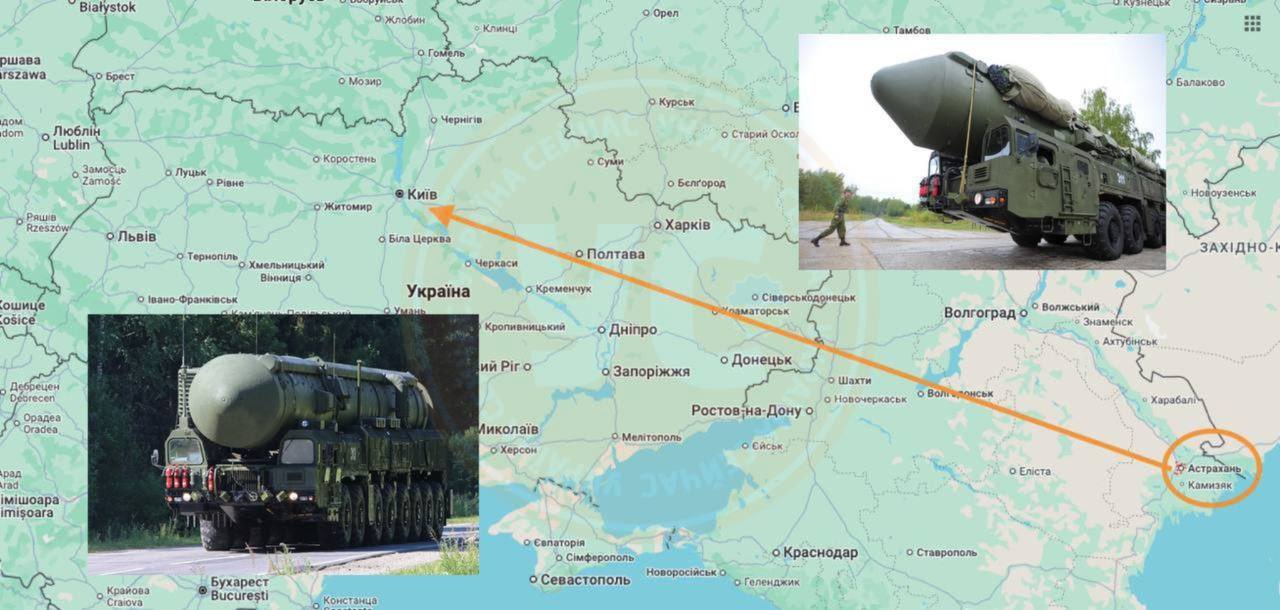What is “Oreshnik”? Russia’s Latest Medium-Range Ballistic Missile Explained
Russia's latest medium-range ballistic missile, "Oreshnik," is reportedly equipped with **Multiple Independently Targetable Re-entry Vehicles (MIRV)**, which enable separate warheads to strike multiple targets.
(DEFENCE SECURITY ASIA) — President Vladimir Putin confirmed that Russia has launched its latest hypersonic medium-range ballistic missile, known as “Oreshnik,” targeting Dnipro, Ukraine.
This action was in response to Kyiv’s use of U.S.- and U.K.-made Storm Shadow and ATACMS missiles to strike Russia’s Kursk Region a few days earlier.
What is “Oreshnik” (Hazel Tree)?
What did Vladimir Putin say?
The Russian president stated that the war in Ukraine is escalating toward a global conflict after the United States and Britain permitted Kyiv to strike Russian territory with their long-range missiles.
He warned the West that Moscow has the capability to retaliate.
In direct response to Ukraine’s missile attacks using American and British long-range missiles on November 21, Putin revealed that Russia retaliated by launching previously-unknown “Oreshnik,” one of its newest hypersonic medium-range ballistic missiles, targeting an important industrial hub in the city of Dnipro, Ukraine.
Dnipro hosts Pivdenmash, a Ukrainian missile and space rocket manufacturing facility known as Yuzhmash to Russians.

What is Known About Russia’s Latest Missile?
Putin described “Oreshnik” as a hypersonic medium-range ballistic missile with the following capabilities:
-
The missile, classified as a Middle-Range Ballistic Missile (MRBM), travels at speeds of up to Mach 10, making it ten times faster than the speed of sound. This velocity renders it invulnerable to interception by any existing air defense systems, including Patriot, THAAD, or other Anti-Ballistic Missile (ABM) systems.
-
Russian sources claim “Oreshnik” has a range of up to 5,000 km, allowing it to target most parts of Europe and even the west coast of the United States.
-
It is reportedly equipped with Multiple Independently Targetable Re-entry Vehicles (MIRV), which enable separate nuclear or conventional warheads to strike multiple targets.
According to Russian military expert Anatoly Matviychuk as was quoted by the media, “Oreshnik” can carry six to eight conventional or nuclear warheads.
Yuri Podolyaka, a pro-Russian military blogger born in Ukraine, suggested that the missile may already be in active service with the Russian Armed Forces.
The Pentagon identified “Oreshnik” as being based on the RS-26 Rubezh Intercontinental Ballistic Missile (ICBM).

Reports indicated that the U.S. was notified of the attack on Dnipro’s military facility half an hour before the launching of “Oreshnik” through nuclear risk reduction channels.
What Did Ukrainian Authorities Say?
Ukraine’s Air Force claimed that Russia launched an ICBM at Dnipro. However, the United States disputed this, noting that ICBMs typically have a range of over 5,500 km.
Ukrainian President Volodymyr Zelenskiy condemned Russia’s use of the new missile, calling it a “clear and severe escalation” of the conflict and urged the global community to issue strong condemnation.
What is the RS-26 ICBM?
-
The RS-26 Rubezh is a solid-fuel, road-mobile ballistic missile developed in 2008.
-
In 2019, the United States officially withdrew from the 1987 Intermediate-Range Nuclear Forces (INF) Treaty with Russia, alleging that Moscow had violated the agreement, a claim denied by the Kremlin.
-
At the time, the U.S. accused Russia of developing a ground-launched cruise missile, identified as 9M729 in Russia, which was distinct from the RS-26. — DSA
![]()




Comments are closed.